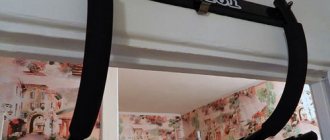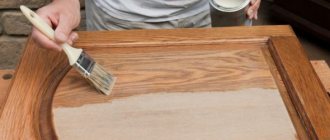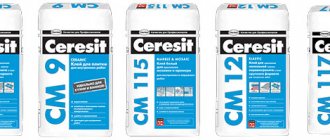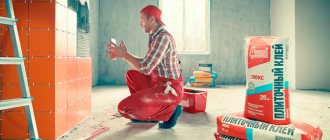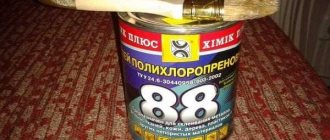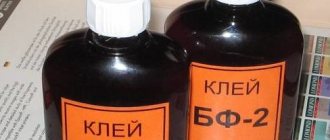Polypropylene is a type of plastic that is difficult to glue together. Not so long ago, polypropylene adhesive began to be produced that can replace the “hot welding” joining method. The special glue made the work of the craftsmen easier, since there is no need to use special equipment that could cause injury, since the main focus is heating the material.
Types of adhesives for polypropylene
Glue for polypropylene pipes is capable of gluing not only large elements, it is also suitable for small parts.
For such adhesive masses, their own classification has been developed. According to composition and ability to contact with different surfaces:
- Reactive to hardening when exposed to temperatures. The composition includes polyester and epoxy resins, the hardening of which occurs when heated or under the influence of a hardener (for example, anaerobic glue).
- Acquiring plasticity when exposed to temperatures. When heated, the rubber composition begins to melt and fill gaps, cracks, and voids. Solidification occurs when the mass cools.
Methods for gluing PVC pipelines
There are two ways to glue PVC pipe:
- hot;
- cold method.
The hot connection occurs exclusively after heating, using a soldering machine. You can use not only professional equipment, but also a small device can firmly fasten the links and ensure tightness. Even if the seam is made poorly, the product will provide excellent adhesion, since the seam is heated during gluing at 260 degrees.
The cold fastening method is used using universal or specialized glue, which effectively holds water supply elements together. During installation, the mixture is applied to the surface of the product, and the parts are held together for some time in a stationary state.
Gluing elements: step-by-step description
Each package contains instructions for use. But the general rules for each gluing of polypropylene and pipes are as follows:
- Preliminary cleaning of the bonded surfaces is mandatory. This procedure is carried out with acetone and alcohol. The manufacturer of the adhesive composition may not mention it, but you can’t do without it.
- The adhesive mass is distributed over the plane in an evenly thin layer.
- Afterwards, the elements are kept for up to three minutes and connected by pressing tightly.
- Put into operation after complete drying.
Gluing work is carried out using IZ products, since if the adhesive gets on an open area of the skin, it can cause allergies and irritation.
Advantages of using plastic pipes
Various designs made from PVC pipes have long been used in their projects by designers around the world. This is due to the fact that such material has a lot of positive qualities:
- Finished products have an aesthetic appearance. Snow-white designs fit especially well into a laconic interior in a minimalist style.
- This type of plastic is considered environmentally friendly and does not cause any harm to health (can be used in children's rooms).
- If any part of the structure cracks or becomes deformed, it will be easy to detach it and replace it with a new part. You can install another part or an entire block at any time to modify the product.
- The structure does not need to be painted, but if desired, you can cover the surface with acrylic paint, decorative varnish, or even spray paint it.
- Collapsible structures can be easily stored on mezzanines in the garage, and can be assembled if desired - for example, when guests arrive.
- Plastic does not deform under the influence of the sun and can withstand even high temperatures.
- The design has good strength and is difficult to damage.
- Thanks to the existence of pipes of various diameters and components for them, it is possible to create a product of any size.
- If you wish and have free time, you can make structures from plastic pipes not only for yourself, but also for sale.
- Low cost. You don’t have to spend a lot of money to purchase the material.
- Plastic pipes have good corrosion resistance and are not afraid of water.
PVC pipes do not lose their original appearance even after time
Table 1. Types of PVC pipe hangers
| Type | Description |
| One-piece | They are secured with strong glue, making the structure reliable (non-removable). |
| Collapsible | Fixed with rubber seals. Such products will be less durable, but they can be disassembled and reassembled at any time. At the same time, such hangers will be especially appreciated by those who like to travel, because the pipes are quickly assembled into a single product, similar to a construction set. The product can be transported to the country without any problems. |
PVC pipe hanger on wheels
How to glue polypropylene pipes
For the connection process you will need:
- PVC pipe;
- pipe cutter;
- adhesive;
- a special gun for easy application of glue produced in tubes;
- brush (natural bristles) for applying the mass, packaged in jars.
Stages of work:
- Marks of the required length are made on the pipe.
- The pipes are cut according to the marks using a pipe cutter.
- The edges are sanded to create a rough finish that provides better adhesion.
- Mark with a marker the distance to which the connection will occur.
- Degrease the ends with acetone or alcohol.
- Apply a thin layer of adhesive solution evenly.
- The connection is made based on the marks.
- If excess appears, it is removed.
- Wait until it dries completely (about a day).
- Carry out a check - water supply under pressure.
During operation, it is necessary to maintain an operating temperature of 5–35 degrees.
We recommend videos on the topic:
In case of emergency repairs, you will need to turn off the water supply, since the flow will not allow you to fully correct the problem. Afterwards the leak area is dried, cleaned and degreased.
Cleaning is done with fine sandpaper to roughen the surface so that adhesion will be better. Next, the adhesive is evenly distributed and a sealing tape is applied in a spiral. Water is added to the system after the repair seam has dried.
During the work process, ambiguities may arise:
- Bad sizing. Occurs because the adhesive solution was not applied to the entire plane or the application was uneven.
- Non-gluing. Occurs due to overexposure of the adhesive layer without connection.
- Soft connection. It is possible that when putting a product or pipe into operation without waiting for complete drying, or during operation the temperature conditions were not observed.
- Porosity of the connection. Occurs when air appears in the adhesive layer, which indicates poor pre-mixing.
How to glue polypropylene
Before you begin installation of polypropylene pipelines, you must do the following:
- Determine the need for materials necessary for the work;
- Purchase and deliver them;
- Prepare the necessary tools (pipe cutter, files, hacksaw, grinder, paint brushes, sandpaper, hammer drill, screwdriver, screwdrivers, hammer, tape measure, marker), as well as personal protective equipment (gloves, goggles, respirator);
- Prepare the workplace (provide comfortable and safe working conditions).
We recommend that you read: How to properly fasten and fix polypropylene pipes to the wall
After completing these activities, proceed directly to installation in the following order:
- Marking pipes according to required dimensions.
- Cutting according to the markings made.
- Cleaning of burrs and contamination from the ends and seats of connected pipelines.
- Assembling the pipeline “dry” and marking the fitting dimensions for fitting couplings.
- Degreasing the surfaces to be joined with solvent or acetone.
- Applying glue in an even thin layer with a brush or gun (depending on the type and consistency of the selected glue).
- Assemble the pipeline parts in the required sequence according to the marks with mandatory fixation for 20 seconds.
- Removing excess glue.
- Fastening the assembled pipeline to building structures using brackets and clamps (moving glued pipeline units is allowed no earlier than 20 minutes).
- After 24 hours, perform a hydraulic test of the pipeline.
Features of certain types of adhesive for polypropylene
Today on the market there is a range of adhesives for gluing polypropylene elements together, each with its own characteristics:
- Cosmoplast 500 is a transparent one-component composition that is used at home and in production. Popular when assembling plastic windows. The first setting occurs after 3 seconds, final polymerization occurs after 16 hours, provided that the operating temperature is maintained at 20 degrees.
- WEICON Easy-Mix PE-PP is a two-component composition designed for gluing polypropylene pipes. Made on the basis of methyl acrylate. Has high adhesion. At room temperature, complete drying will occur within a day.
Plastic pipes for gluing
Unlike pipes made of metal, products made of polypropylene
can be assembled on your own even without much knowledge. Professionals like not to use traditional plastic for hot pipes or heating pipes, but to use it for sewer lines. But certain types of products (in alloys with metal) fit perfectly into both cold and hot water. The positive qualities of polymer pipes are undeniable:
- resistance to changing natural conditions (decrease in pressure, drop in temperature, increase in moisture);
- no rust;
- long service life (more than fifty years);
- ease of installation, gluing, repair;
- relatively inexpensive price;
- health safety.
Such a pipeline also has disadvantages. The plasticity of the material may decrease when heated, the increase rate is large. When exposed to sunlight, certain types of plastic age faster, which must be taken into account during installation.
Equipping a house with a water metering unit and a sewerage system using Plastic pipes can be done with products of various types. Depending on the constituent elements and manufacturing technology, the following types of plastic pipes are produced:
- Made from PVC (PVC). Much more rigid and very easy to glue. They are not flammable, do not react to UV radiation, and are lightweight. Unfortunately, chlorine is used in the manufacturing process, so PVC pipes are not considered environmentally friendly.
- Polyethylene. They are quite strong, elastic, can easily withstand even the freezing of water, and do not burst. They are smooth in the middle, and water does not leave any plaque or deposits of impurities in them. Among the disadvantages, it must be shown that they are not suitable for hot water - they begin to melt. Connected by connectors with a clamp. A specific type is cross-linked polyethylene tubes, which are used for underfloor heating systems.
- Polybutylene. Suitable for water with temperatures up to +90 degrees, but cannot be installed using gluing. Used in the installation of heating systems.
- Polypropylene. Used for hot and cold water, sewerage, heating, very easy to install. They are connected by soldering, they can also be welded.
- Made of metal-plastic. They include aluminum, they are silumin with plastic. Due to the three-layer base, they are suitable for water supply, heat supply, and maintain temperatures up to +110 degrees.
Bonding plastic tightly
For gluing plastic, glue is selected in accordance with the labeling of the material. Plastic can be glued with liquid, contact, epoxy, or hot melt glue. For work, it is important to clean the plastic surface from dirt, prepare the composition and tools, and maintain the adhesion time indicated on the tube. Cosmofen Plus-S, Permatex Super Glue, Henkel Super Moment Maxi, Mastix Poxy Termo, Titan were recognized as the best adhesives for plastics.
Breakage of plastic products in everyday life is not uncommon. If this happens to you, do not rush to throw away the item, it can be easily restored. To glue plastic tightly, you need to understand the type of plastic and select an adhesive material based on it.
How to determine the type of plastic
Taking this factor into account, the glue that will be used to glue the scattered plastic parts together is selected. Manufacturers of plastic goods leave a special designation on their products - the Recycling Triangle symbol. This is a triangle with arrows indicating reuse.
The key to high-quality gluing with your own hands is the correct determination of the type of plastic
Learn more about cleaning yellowed plastic.
The triangle contains numbers from 1 to 7 with an abbreviation used to determine the type of plastic:
- 1 (PET) is a polyethylene terephthalate intended for the production of food packaging for liquids;
- 2 (HDPE) – high-density polyethylene, from which packaging bags and shrink film are produced;
- 3 (PVC) – well-known PVC (polyvinyl chloride), used in the production of doors, windows, linoleum, etc.;
- 4 (LDPE) – low-density polyethylene. Suitable for producing bottles and other packaging, pipes, children's toys;
- 5 (PP) – polypropylene, heat-resistant material. Used in the production of disposable medical instruments, thermal utensils, household appliances, pipes;
- 6 (PS) – polystyrene. It is divided into two subgroups: ordinary and foamed. The first serves as a raw material for the production of disposable tableware, the second (foam plastic) is used for both household and construction purposes;
- 7 (O) – a mixture of foil, polymers, paper that cannot be recycled.
Attention ! Knowing the labeling of the material, choosing a product for plastic will not be difficult - the packaging of the adhesive solvent will indicate the labeling of the plastic for which it is intended for gluing.
Marking of adhesives
The problem is that the markings of corresponding products do not always have the same designations.
On the packaging with the adhesive composition you will see the following symbols:
- PUR – polyurethane;
- PC – polycarbonate;
- PVC – PVC;
- PPMA – organic glass;
- PA 66 – polyamide;
- ABS – acrylonitrile copolymer;
- PP – polypropylene;
- PE – polyethylene;
- PS – polystyrene.
Glue, like plastic, is also marked
If you have any difficulties in selecting a product, contact your sales consultant or study the instructions that come with each product. In it you will find information about what kind of plastic can be glued using a specific glue.
On a note! How to clean your hands from superglue.
Types of adhesives
If in industrial conditions, to glue plastic together, parts are first heated (so that it melts), and then the elements are pressed together by squeezing, then at home this method is not always justified due to inexperience. Therefore, manufacturers produce a safer option - based on polystyrene in liquid form and solvents.
Tips for cleaning up glue marks from tape.
There are 4 groups of products that can be used to seal plastic:
- Liquid glue - made on a water basis, less effective of all groups. It takes a long time to dry (at least a day), but does not deform the plastic. Used for gluing small plastic parts that are not susceptible to high pressure.
- Hot-melt adhesive - produced in the form of solid glue sticks, which need to be heated to 110–120°C before starting work. There are options for liquid hot-melt adhesive, as well as hot-melt guns for convenient application of the substance. Common for minor breakdowns, since the strength of the connection is low.
- Reactionary - produced on a polyurethane or epoxy base. It is the most reliable option. When gluing, it creates a transition layer between the base and the coating, which is characterized by durability, water resistance, rigidity, and load resistance.
- Contact - firmly glues plastic, comes in a set with a hardener. To prepare the composition, mix the glue with the hardener in the required proportions (indicated on the packaging). You can seal the plastic tightly with a contact solution, but it has a drawback - toxicity. When working, use personal protective equipment.
Conclusions and useful video on the topic
Using cold welding, truly high-quality water and sewer pipelines are assembled. Moreover, the method can be used equally effectively when laying communications in a private and multi-storey building.
If you don’t have confidence in your own abilities, it makes sense to hire professionals. But home owners who know how to use tools will not have any difficulty completing the work themselves. We offer useful video materials to help craftsmen.
Why is it better to glue PVC pipes? An experienced master answers:
How and with what you can cut polymer pipes is described in the following video:
The ideal choice is a multi-tool that cuts pipes smoothly and immediately chamfers:
The choice of glue directly depends on the type of pipes, so you should pay attention to them:
There is no simpler technology for connecting polymer pipes than gluing. The method is cheap, convenient, and is not inferior in efficiency to welding. Almost anyone can install a pipeline using glue, because... he will not need any special skills.
The main thing is to choose the right pipes, glue and tools, and be careful and careful when working.
Share with readers your experience in gluing PVC pipes, tell us what kind of glue you used in your work. Please leave comments on the article and ask questions. The feedback form is located below.
How to glue polypropylene
Until recently, it was impossible to glue polypropylene or elements made from it. Now there are many types of glue on the market that make it easy to connect various elements of this material. The use of adhesives is the fastest and most economical way to install polypropylene products.
Among the advantages of using glue are:
- Material integrity;
- Uniformity of tension over the entire surface;
- Ability to connect various elements and parts;
- Very fast, and sometimes instantaneous, fixation of areas.
Emergency repair of water supply and heating pipes
Installing sealant into the gun
The cause of the leak can be found in improper assembly of components or illiterate selection of system components. Wear and operating conditions take their toll. For any reason, the leak must be fixed urgently: water pressure will expand the crack, aggravating the problem. One of the advantages of plastic pipes is the possibility of emergency repairs using improvised means. To eliminate leaks on metal analogues, the minimum you will need is a grinder and press pliers for copper pipes to cut out the damaged area and install a new one using fittings or a threaded connection. The question of how to seal a plastic pipe is easier to solve: even epoxy glue available on the farm will do. Craftsmen who work professionally with plumbing equipment also have special repair kits, including glue for HDPE pipes, sealing tape or silicone gel. Elimination of a small leak is carried out in stages:
- The system is disconnected from the water supply and dried. Attempts to wrap a pipe under pressure will not lead to success: the edges of the crack will not meet hermetically, and the water will not allow the glue to fully set.
- The area is degreased and cleaned of dirt using alcohol or acetone. Light sanding will give the roughness necessary for a tight adhesion.
- Any technique is suitable for gluing, but the method of strengthening the plumbing sealing tape applied in a spiral is called more durable and durable.
- Silicone gel can only cope with pipes that are not intended for strong internal pressure media, and temporary repair of small cracks.
- When choosing a sealant, you need to check the type: neutral is suitable for all types of environments, acidic will not withstand similar solutions. When choosing what to seal a heating pipe or water pipe with, give preference to the type of sealant that suits you at a price; each will cope with its task.
- The compound is applied to the pipe with a mounting gun and leveled. The edges of the crack that is being sealed must be spread as far apart as possible so that the composition penetrates onto the inner surface. At this stage, the master needs the help of an assistant who knocks out a section of the pipe.
- Gluing of polypropylene pipes takes from 12 hours to 24 hours; water can only be released after this period. The test run is done smoothly and gradually so that the water hammer does not damage the seam.
Epoxy two-part adhesive for PP pipes is also used, but before application the components are mixed according to the instructions.
The principle of operation of adhesives for PVC pipes
PVC, due to its high ring rigidity, smooth walls and ability to withstand high temperature loads, is considered a fairly durable pipe material. Ease of installation is another of its advantages.
As a result of the gluing process, the adhesive composition reliably bonds the parts together through the decomposition reaction of the polyvinyl chloride pipe material under the influence of solvents.
Manufacturers add various components to the adhesive composition, which allow them to control the gluing time and viscosity of the joint, and also increase the adhesive properties.
As the adhesive hardens as the solvents evaporate, the polyvinyl chloride polymer molecules bond together to form a sealed joint.
An important nuance is the choice of glue, since not every composition is equally suitable for PVC pipes of varying hardness. So the same brand of glue is not suitable for PVC pipes and CPVC pipes (made from chlorinated polymer).


